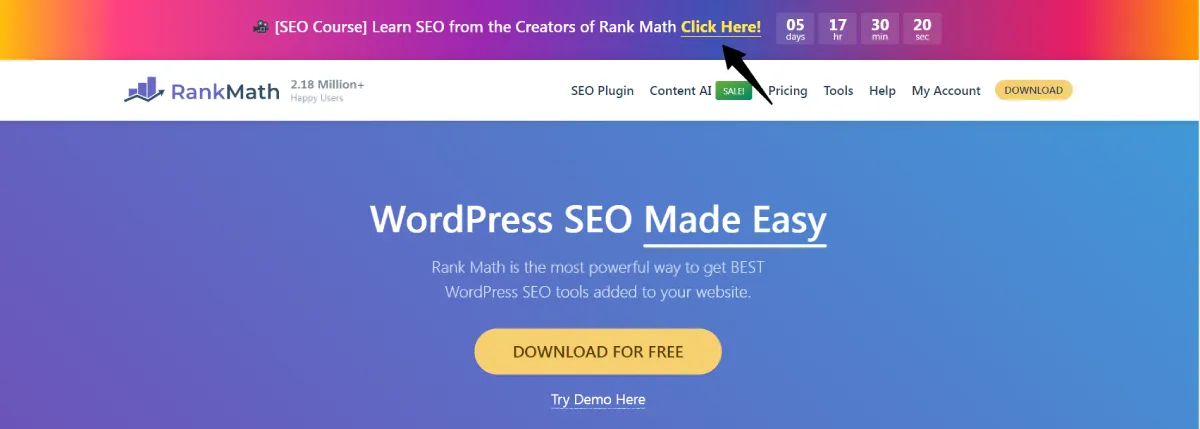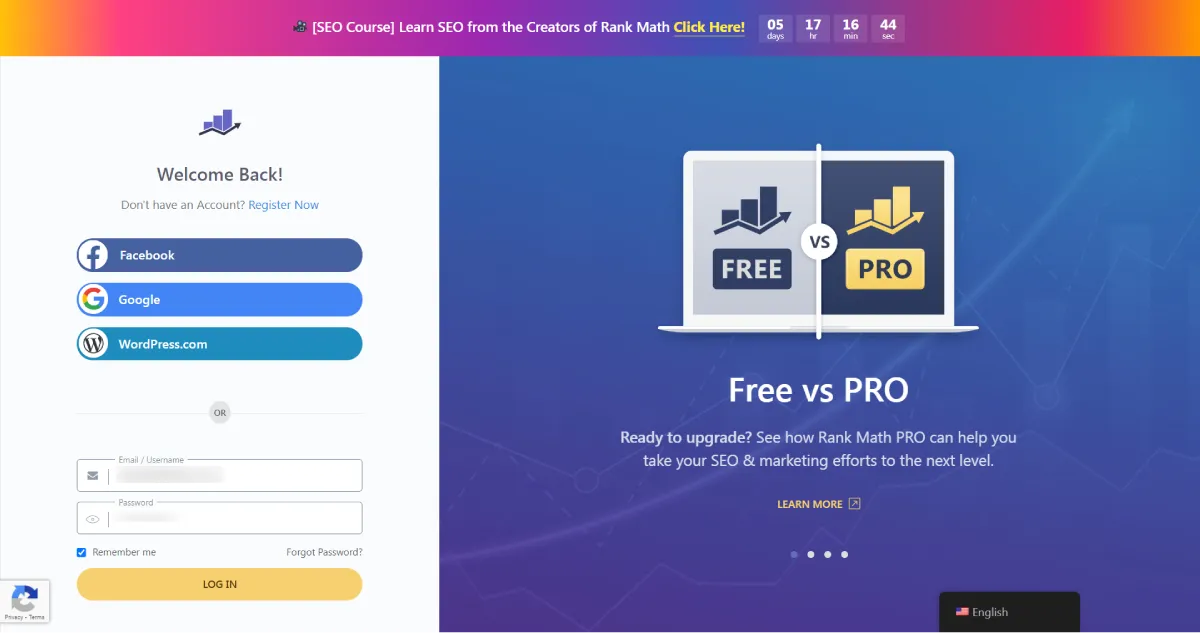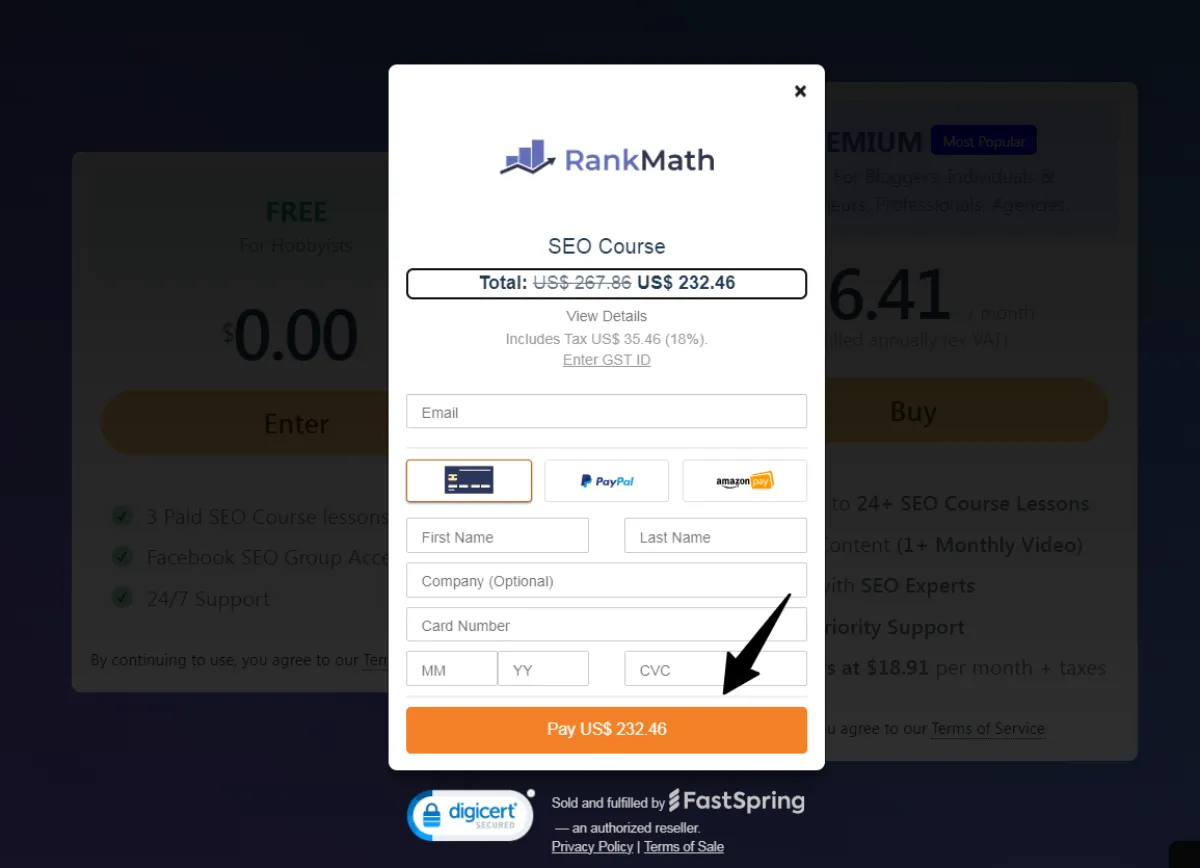Rank Math is not stopping anywhere and after Content AI, it has launched a complete SEO course. The Rank Math SEO course is a step-by-step guide that will help beginners optimize their website content and boost their site visibility on search engines.
Hi! I am Abizer Izzy – A tech writer and SEO learner. In this article, I will be talking about the Rank Math SEO Course which has 6 modules live under the SEO Course section. I will cover each module to the point where you can get an idea of what’s cooking inside. This SEO course is a goldmine for SEO beginners created by the creators of Rank Math. You will be missing out on a great deal of expert tips if you do not access this guide.
| Chapters | Title |
|---|---|
| Module 1: | SEO Foundations |
| Module 2: | Unraveling Search Engines |
| Module 3: | Getting Your Pages Indexed Fast |
| Module 4: | Keyword Cornerstones |
| Module 5: | Mastering Keyword Research |
| Module 6: | Site Structure & Authority |
Table of Contents
What is Rank Math?
Rank Math is the #1 WordPress SEO plugin used by millions around the world to improve their SERP visibility and reach the pinnacle.
Rank Math has two versions. The free version is available for a lifetime just like Yoast SEO. The Pro version gives you access to Content AI with lots of advanced features.
You can check out the Rank Math Content AI post to understand more about how it is a game-changer for WordPress users. I believe Rank Math Content AI is the best alternative to Chatgpt.
With this, let us begin our Rank Math SEO course. First, let me show you how you can access this course.
How To Access the Rank Math SEO Course?
👉 Step 1: Visit Rank Math’s official website and you will see the “Click Here” option to enter the SEO course.

👉 Step 2: You will be redirected to the SEO course page. Click on Buy Now and you will get scrolled down automatically to the pricing options. You can either start for free or purchase the premium SEO course for $16.41/month.

The free SEO course gives you access to 3 paid SEO course lessons. This is a great option to kick-start your SEO journey for free. You need to buy the premium version to access all the SEO course lessons.
👉 Step 3: Clicking on the Free option will require registering for a free Rank Math account. If you already have a Rank Math account, simply log in.

👉 Step 4: If you want premium SEO courses, choose the premium option > click on Buy > Choose a preferred payment option > Complete the payment.

Let’s talk about what’s inside these SEO modules created by Rank Math experts themselves.
Rank Math SEO Course Modules
In this post, I will only cover short details on these modules so get a picture of what you will be missing if you don’t enroll yourself. After enrolling yourself for this course, you will learn the basics of SEO, on-page & off-page SEO, site planning, technical SEO, and advanced SEO.
In total, there are 27 videos. You can skip 1.1 &1.2 and move on to 1.3 directly.
📌 Module 1: SEO Foundations
The first module is all about setting up your WordPress site correctly. In this, you will learn:
- How to buy a domain name and hosting?
- Create new posts & pages. For any website, a few pages should be published primarily such as Privacy Policy, About Us, FAQs/Knowledgebase.
As far as domain & hosting is concerned, I recommend Hostinger (This blog is hosted on Hostinger).
But before you create a post or a page, it’s important to install recommended plugins. Install & activate the Rank Math SEO plugin and connect your Rank Math account with your WordPress site. The steps are simple including Easy, Advanced, and Custom Mode settings.
📌 Module 2: Unraveling Search Engines
In the second module, you will learn:
- How do search engines work?
- How your site is crawled by the search engine and how site rank upon related ranking terms?
- How do SERPs look?
You will understand digital marketing strategies to rank your site on search engines. This involves on-page & off-page SEO and paid advertising. Paid advertising puts a lot of your money on the table. So, it’s better to focus on organically ranking your site on Google.
SERP (Search engine results page) is where you can see website results popping up based on keyword searches. The top section is the Ad result which is paid. Below the ad section appears Featured snipped and organic results based on SEO optimization. The click-through rate (CTR) of featured snipped is 42.9% and that of organic is 27.4% (this is why SEO is difficult).
If the search result does not have a featured snippet, then a CTR of 39.8% is expected with organic results. The CTR decreases as the rank of your site goes down from #1 to #10 in SERPs.
I loved the way CTR calculation is explained by Rank Math. After watching this video, you will understand how CTR is different for search ads, featured snippets, organic results, video results, and more.
📌 Module 3: Getting Your Pages Indexed Fast
In this module, you will learn:
- How to set up Google Search Console using Rank Math advanced settings?
- How to index your posts and pages faster?
- How to check page indexing in GSC or Rank Math?
- Issues that lead to preventing your posts/pages from getting indexed.
Setting up a Google Search Console is what every website should do. This helps you track your website performance and indexing issues.
If your pages aren’t indexed automatically, you can do it manually from the GSC. The course shares tips to index your posts & pages faster using Rank Math Pro features while keeping the quality of articles.
Need a faster way to index your pages?
Learn to set up Indexing API on Google Cloud Platform and instantly index your site pages.
Google Search Console has different statuses for not indexing posts or pages. You can check it inside your GSC or Rank Math.
Six main reasons could prevent your pages from being indexed as explained by Rank Math. After all the hard work, if you miss out on these tips, your site is nowhere on Google.
📌 Module 4: Keyword Cornerstones
Keywords are the backbone of searches, whether it’s organic or paid. In this module, you will learn:
- Why do keywords play a vital role in searches?
- What are the types of keywords and which keywords you should focus on?
- What are the different types of search intent?
Every search engine, may it be Google, Yahoo, Bing, Yandex, or more produces results based on keywords.
Keywords are mainly of two types viz. Short-tail and Long-tail keywords. Short-tail keywords are less than 3 words and are unclear. Whereas, long-tail keywords are more than 3 keywords and are precise. It’s easier to rank for long-tail keywords than short-tail keywords.
📌 Module 5: Mastering Keyword Research
If you have come this far, you must be well aware of Google Search Console, page indexing, and keywords. Now Rank Math helps you climb further with more insights into keyword research. “Jack of all trades, master of none”. With the Rank Math SEO course, you will master SEO. In this module, you will learn:
- How to do keyword research that brings fruitful results for your site?
- Types of keyword research that can be done on Google for free
- What is keyword cannibalization and how to avoid it?
- How to use Google Keyword Planner for search volume?
- How to differentiate low, medium, and high competitive keywords?
- Learn keyword research with a paid tool (LowFruits)
Keep an eye on the keyword research metrics that include Domain Authority (DA), Domain Rating (DR), and Trust Flow (TF).
The chapter also tells you about page-specific metrics.
Love the idea of the keyword research spreadsheet which you can download and use for free. You can use this keyword to add helpful keywords for your site.
Google is the best tool for finding keywords instead of wasting money on keyword research tools. The only thing is you should know how to search on Google precisely. Leverage Google autosuggest and related searches to find high-potential keywords that are popularly searched on Google. The People Also Ask section is where you can find question-based keywords.
The chapter explains XML Sitemap and the Search operator method to find relevant keywords in your niche.
The course explains keyword clustering and why you don’t need to create separate articles for keywords with the same meaning.
If you have multiple keywords with the same intent and meaning, you should select a less competitive keyword.
📌 Module 6: Site Structure & Authority
In this module, you will learn:
- Importance of site structure
- What’s the best practice for site structure?
- How Rank Math can help you create a SILO structure?
- What is the Hubs & Spokes model?
If you have no idea how to keep your site structure healthy, then the chapters in this module will help you do so. You will learn how to avoid unnecessary interlinking between articles in different categories.
Coming Soon:
Till now there are 6 modules uploaded but there will be more coming up every month. So, stay updated!
- Crafting High-Quality Content That Ranks
- Optimizing for On-Page SEO
- Page Speed Optimization
- Link Building Strategies
- Off-Page SEO
- Monitoring and Updating Your Site for Better Rankings
Conclusion
Rank Math SEO Course will be updated every month with one new module including different video chapters.
For me, this course was an eye-opener as I learned new SEO tips that will help boost traffic on my blog.
I hope after my Rank Math SEO Course review, you have understood its importance. SEO is a long-term game and Rank Math is taking everyone an inch closer.
I will be back with more SEO tool reviews.
Till then…
Be Healthy, Be Wise, and Keep Sharing!
Take Care Reborns
🌟 FAQs | Rank Math SEO Course
Is the Rank Math SEO course free?
Yes, it’s free for the first 3 modules. This gives you an idea of what information is ready to be delivered in the coming modules.
Who is the SEO course by Rank Math for?
If you are a blogger, solopreneur, freelancer, or running an agency, this course is meant for you.
Can I get my money back if I don’t want to continue with the course?
Oh yes! There’s a 30-day money-back guarantee.
What if I have doubts about the training?
If you have technical doubts, you can raise a ticket and expect a prompt reply from Rank Math experts.
![Newly Launched Rank Math SEO Course Free For Beginners [year] 1 rank math seo course](https://affreborn.com/wp-content/uploads/2023/10/rank-math-seo-course.webp)
![GoDaddy Hosting Review [year]: Best Low-Cost Web Hosting 2 godaddy hosting review](https://affreborn.com/wp-content/uploads/2020/03/godaddy-hosting-review-320x200.webp)
![WazirX P2P Exchange Review [year]: Is It Free and Reliable? 3 wazirx p2p review](https://affreborn.com/wp-content/uploads/2022/06/wazirx-p2p-review-320x200.webp)
![WPEngine Review [year]: Best Managed WordPress Hosting 4 wpengine review](https://affreborn.com/wp-content/uploads/2020/03/wpengine-review-320x200.webp)
![Honest Moosend Review [year]: Free Trial, Pricing, Pros & Cons 5 moosend review](https://affreborn.com/wp-content/uploads/2022/08/moosend-review-320x200.webp)
![FlexClip Review [year]: The Best Free Online Video Editor 6 flexclip review](https://affreborn.com/wp-content/uploads/2022/02/flexclip-review-320x200.webp)
![Honest Zoviz Review [year]: One-Click Premium Logo Designing Tool 7 zoviz review ai logo maker](https://affreborn.com/wp-content/uploads/2025/01/zoviz-review-ai-logo-maker-320x200.webp)